Medullary rays Brighten My Days
When I was a boy, men, being what they are, mocked me when I admired grain, shook the planks of oak to break me from my admiration and shook me back to working. But George stepped in and let me be and took up the slack for me. He knew I saw what he saw, colours, textures. He knew I’d listen for sounds at my fingertips, sounds that the men had become benumbed to through world wars and the pressures to work and work hard. Roses stopped smelling you see.
I have cut so much oak in my lifetime but this wood alone fascinates me as much as the mesquite wood that grabbed my attention so strongly when I first arrived to live in Texas back in the mid-1980s. Though there is no link between the two tree species, it’s the figuring that frequently occurs in both that piques my interest. No other woods allow me to dive into them with such total expectation that I will be immersed in fascination in a matter of seconds.
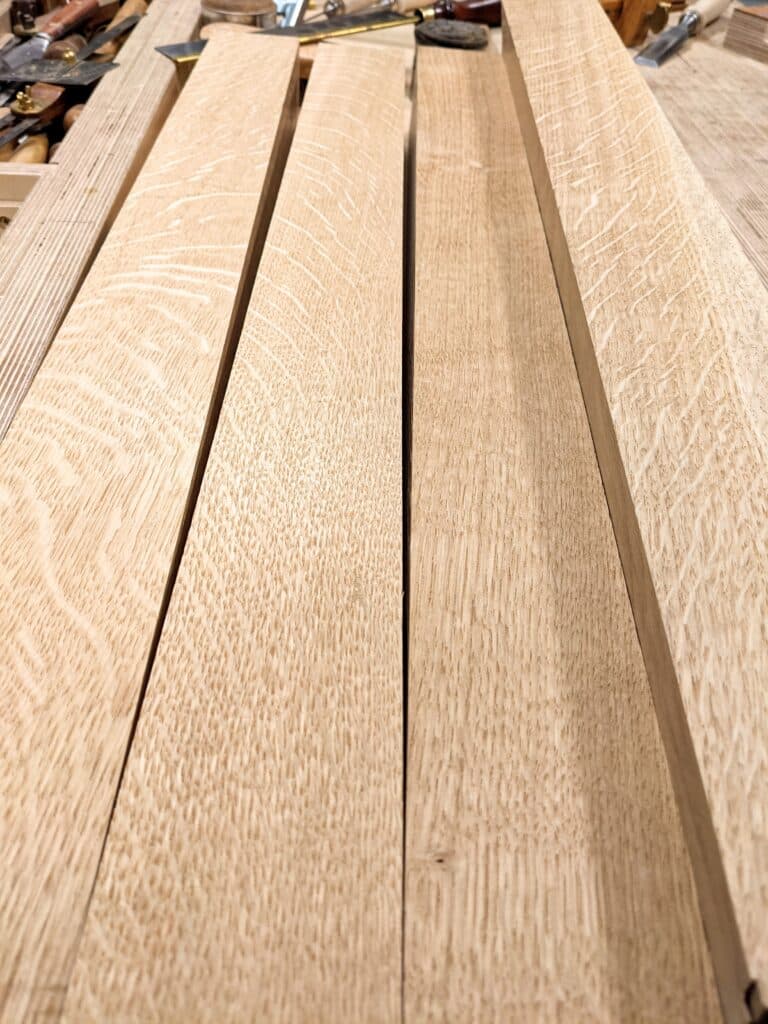
Rarely do or might I say can I just pass over the surfaces without stopping to stare and touch and even smell the wood for minutes and then return to stare again just minutes later. Why is this? I think mostly it is the unpredictability of where the cells will come but then how those cells will appear when I sever off a thousandth of an inch to split the cells as no other artisan in any other craft will ever know. When I swipe my plane the medullary ray shifts an inch and more across the board beneath my plane and completely changes shape, size and position and it is completely beyond my control. From single simple dots to a series, broad and narrow ribbons, sweeping arches, feathery bands, silvered flashes and more than is possible to describe, a veritable poem emerges to defy any man’s words.
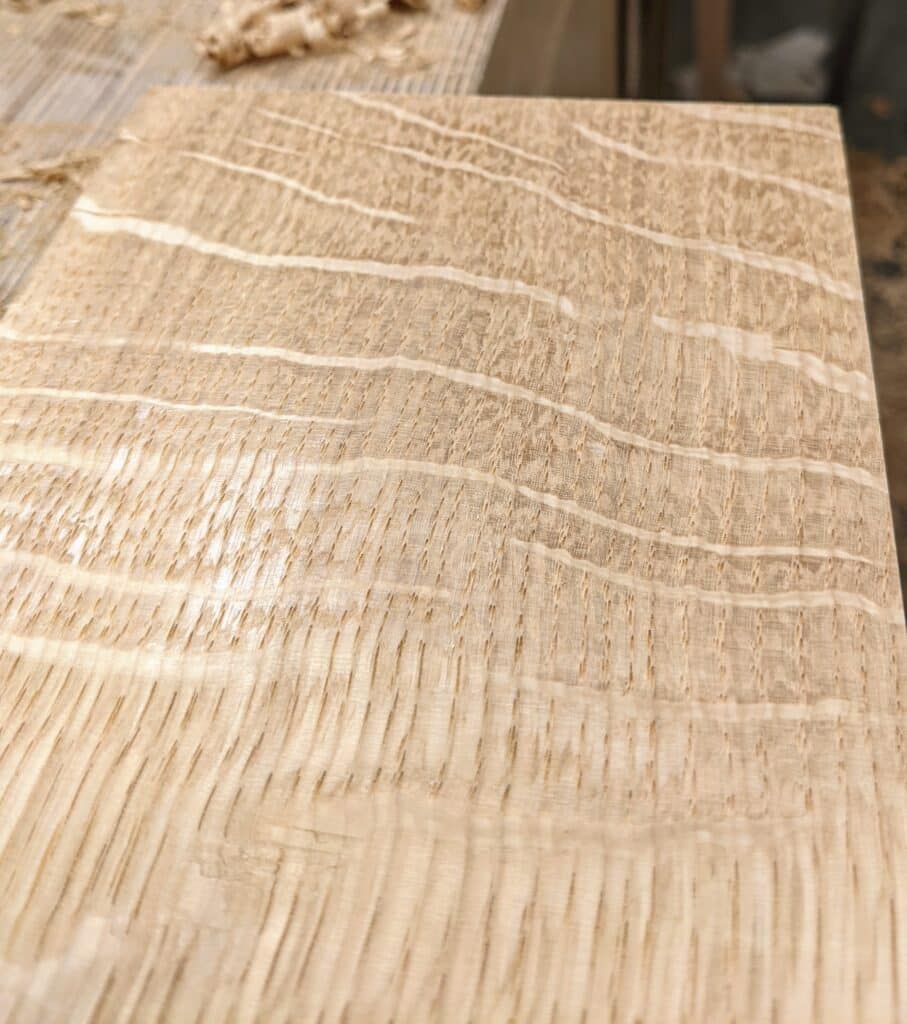
All trees have medullary rays as part of the tree growth but in most cases, they are too small to be seen unless you catch them perfectly perpendicular to the growth rings of the tree. In cherry and beech, you might catch them on occasion, but on oak, they will be 50 times broader, longer and deeper. This alone makes oak uniquely different from all other wood species. I am in a cafe right now and every oak table in here shows medullary rays in the quartersawn sections used in the tabletops. This alone tells you something.
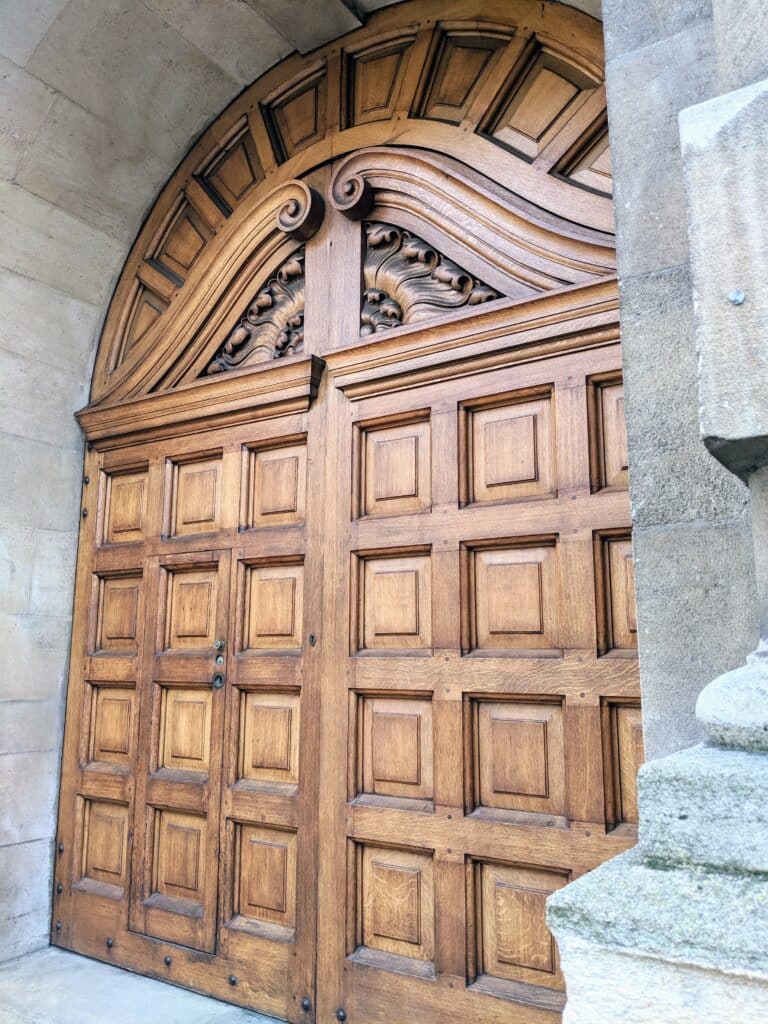
Go back into Oxford colleges across Oxford’s university district and you will see panels of oak from the 1600s where the single-piece panels are 15-24″ wide in single pieces by many a dozen. These panels, unintentionally decorated with ray cells, will have full-width rays traveling from top to bottom in the most amazing kaleidoscope of patterns and colours you’ve ever seen. Museums, town halls and post offices dating back to the early days of Oxford bespeak the historical value of oak to England’s heritage and people walk past them without stopping, unable to tell the difference between the historical value in ancient oak panels and frames and the MDF tabletops covered with plastic veneers they just ate their sandwich at.
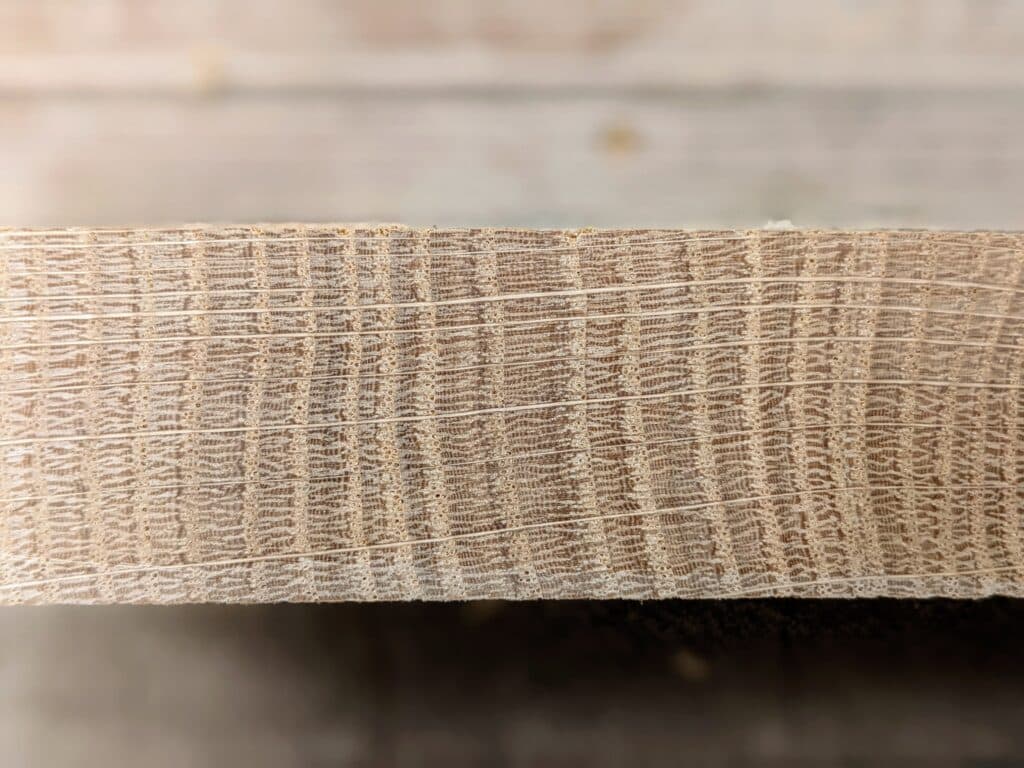
Medullaries, ray cells, pith cells and several others are one and the same with medullary rays or cells. Split an oak log for a Windsor chair or bench seat and the best lines to look for with regards to direction for driving the opening wedges are the very evident ray cells emanating from the central pith of the log, out to the outer cambium layer. I split this end grain offcut of quartersawn (as I often do) to show what it is to split a medullary cell. A light pop along the length of the ray with a sharp, broad chisel will result in a split along the length and you will see that broad band of the ray that decorates oak like no other.
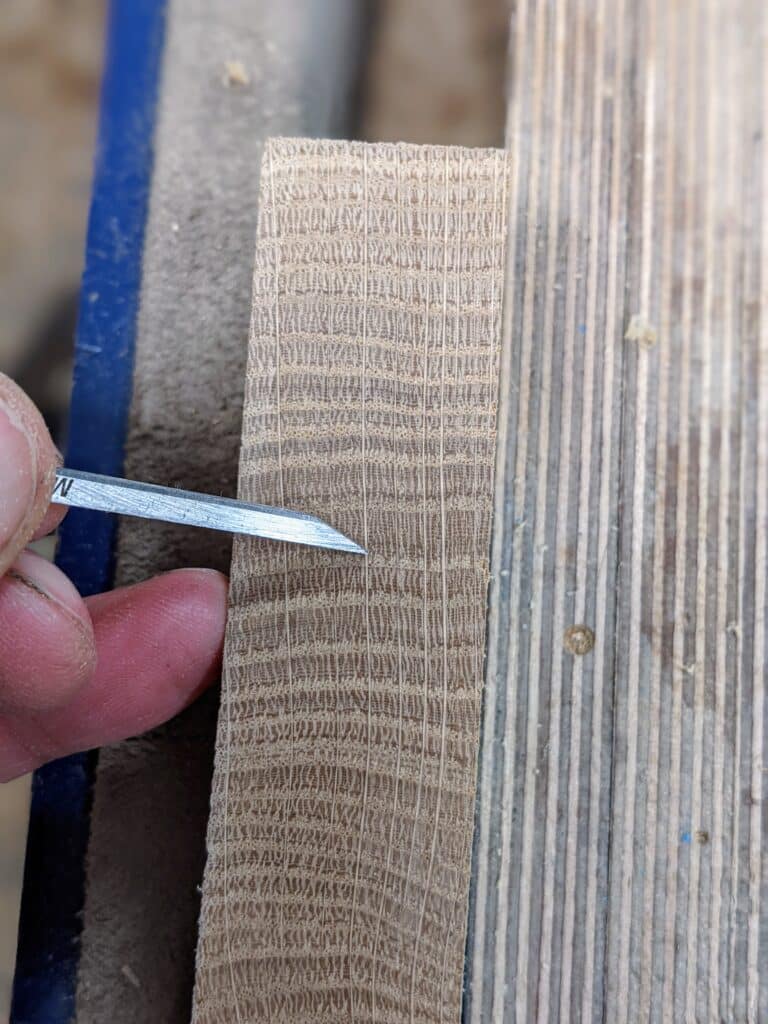
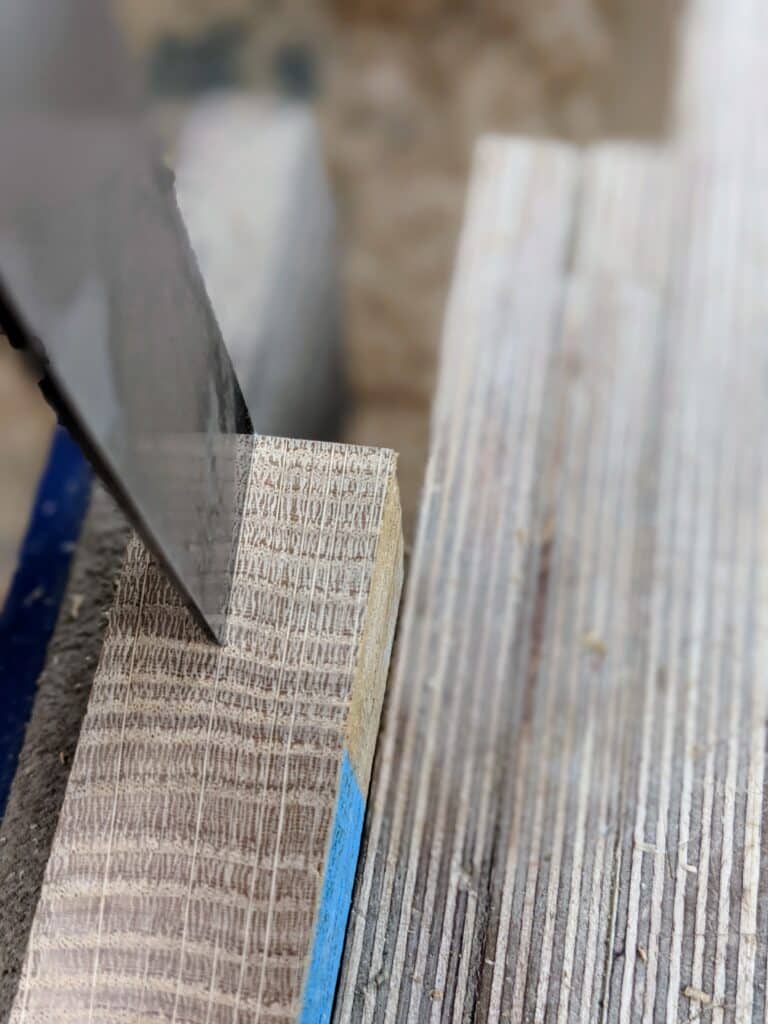
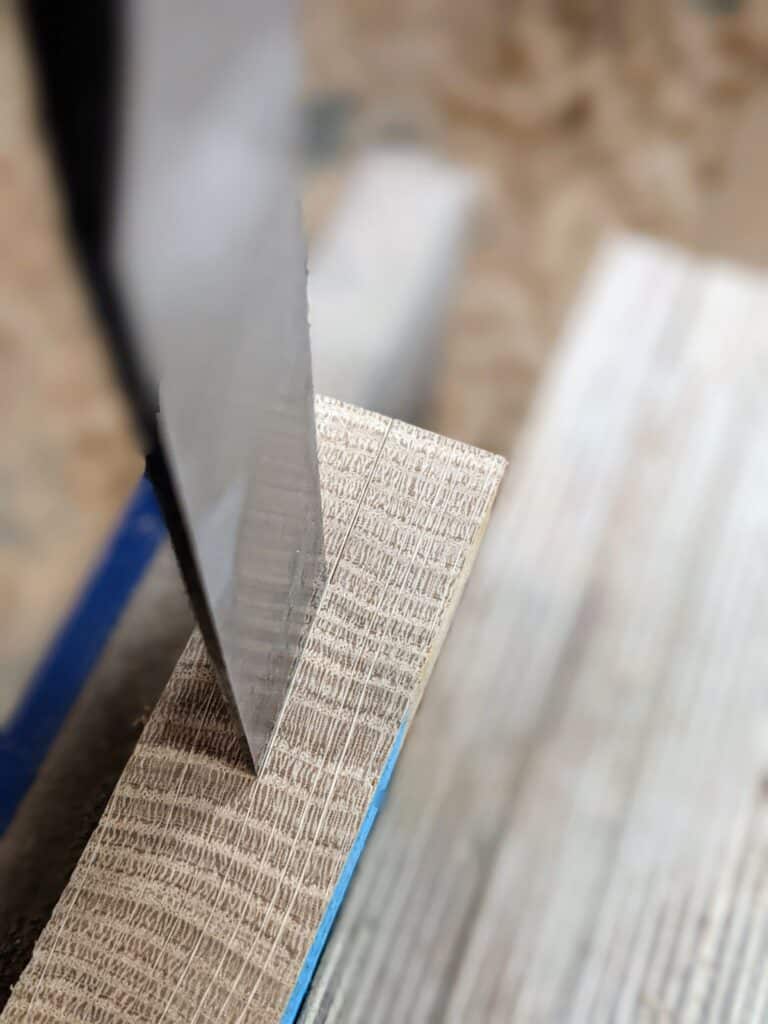
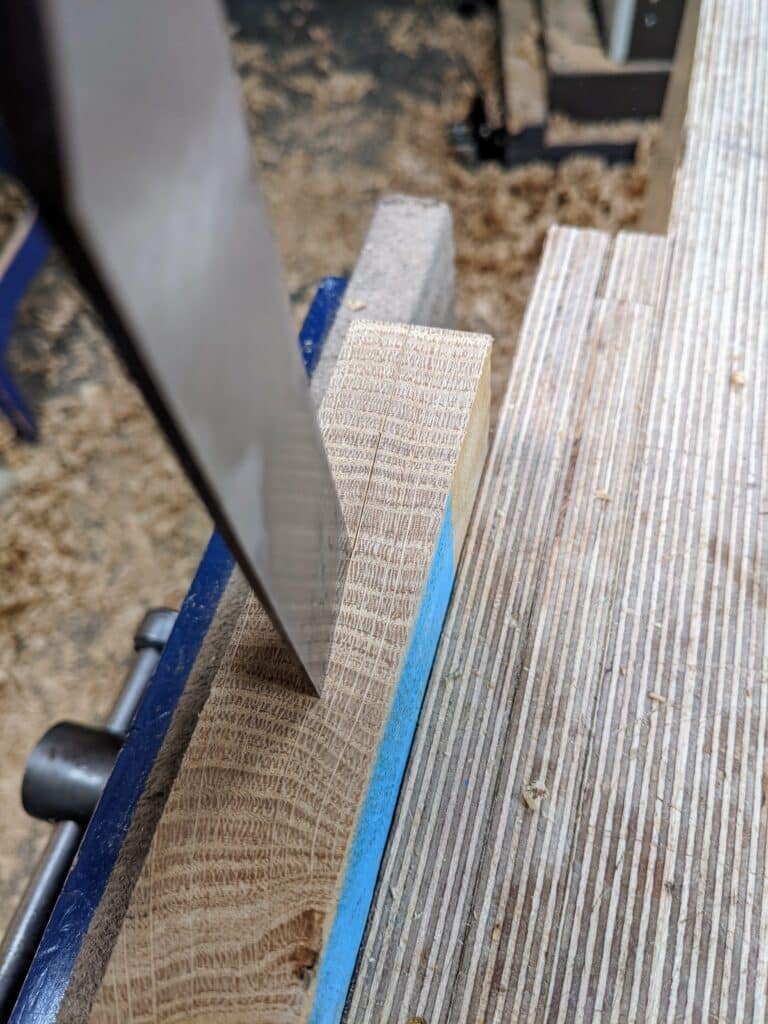
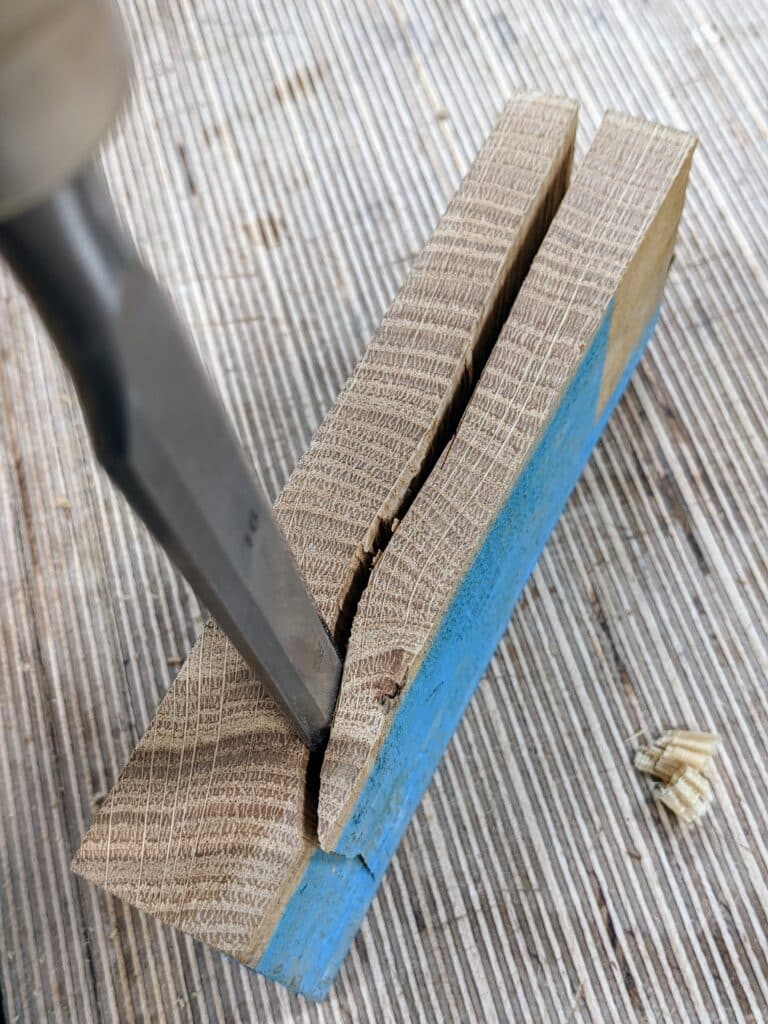
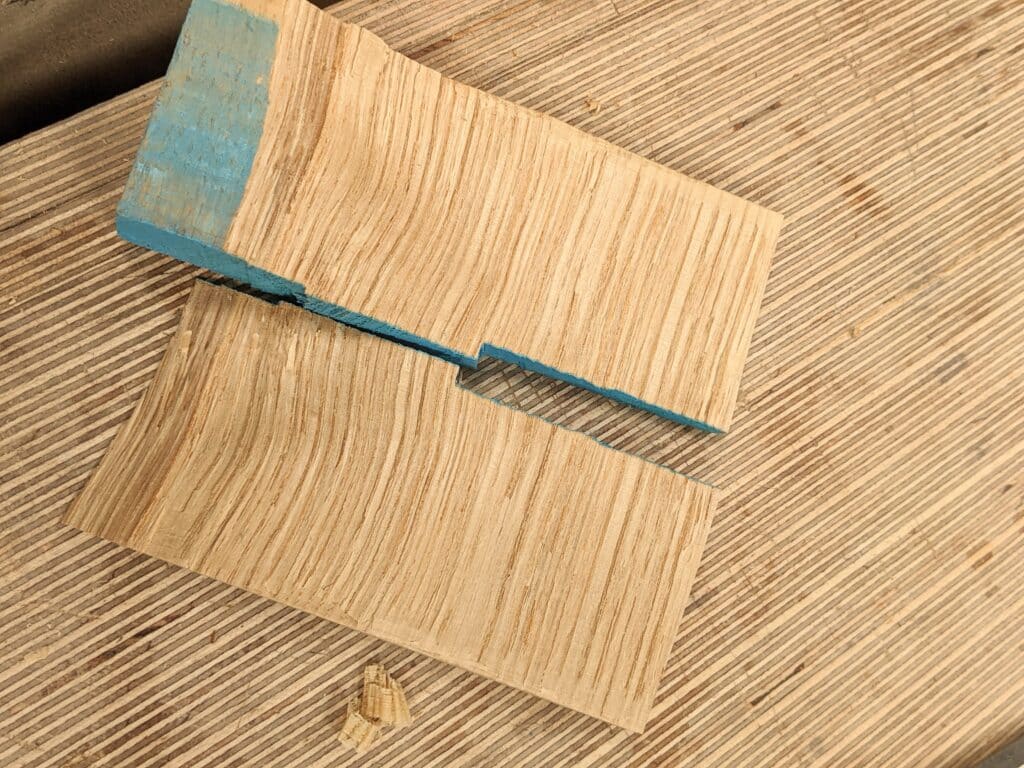
In the days long gone when oaks were king and so plentiful we would have had no need but to take care of forests and let them do their thing, they and we would have survived. Then the greed of a great revolution came and also mining and the waste of life for what is now regarded as toxic pollution. The true pollution of course was not the fossils silently encased in the earth but those of the time who wanted their kind of supremacy and power. My work is simple and I am glad for my oak and that the table I will make will last for hundreds of years if respected and taken care of. The average life span for one big-box-store dining table is about seven years. Sadly, those with low income, have little choice but to support them. Oh, well!
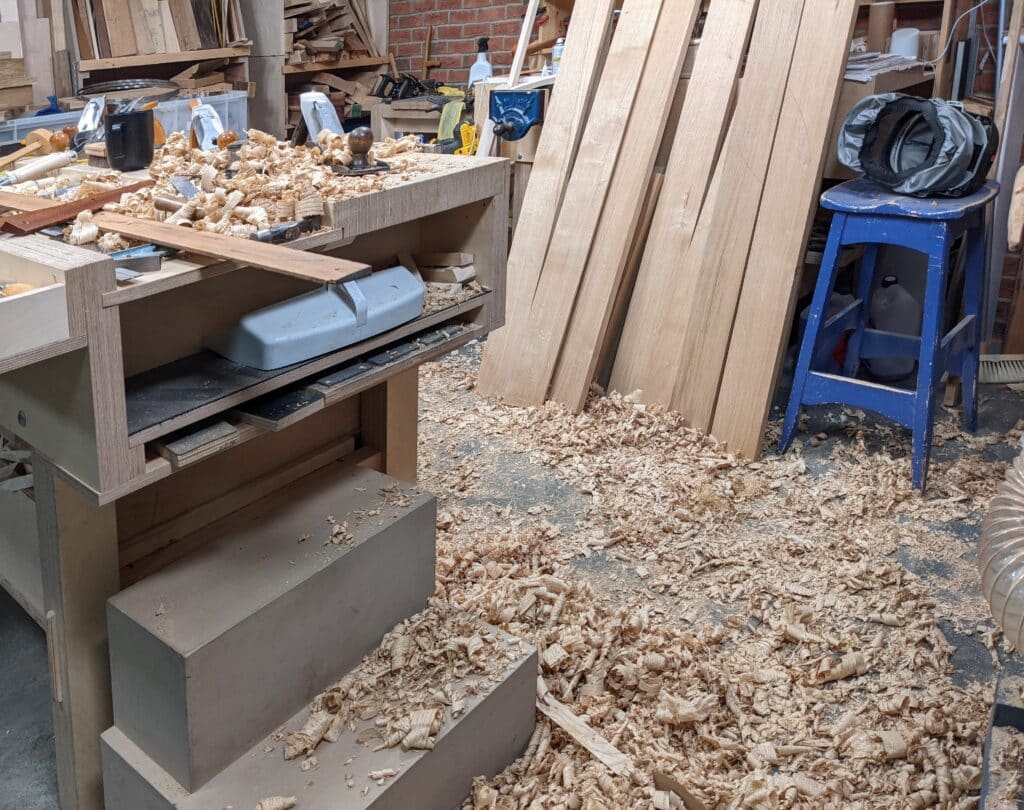
So many ways to discover and understand wood without just reading a book. I hope that you will take this and go and split some oak, even if it ends up as fire starter for the woodstove. I learned more splitting orange box crates as a boy and the memories of knots remain my best educator when it comes to knowing what knots do and are.
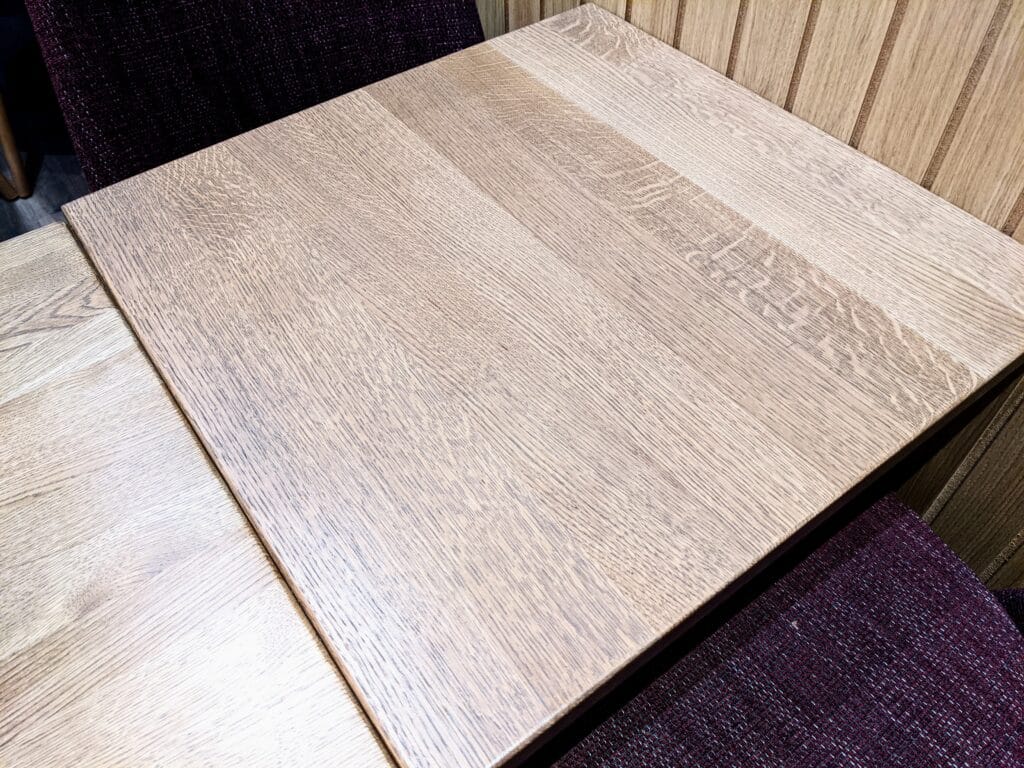


Very interesting, as usual, Mr. Sellers.
I had not understood (and I find it so obvious now) the action of slicing in the tiny veins to ensure the best wood picture.
So nice, thank you
I teach English Composition at a University in Midwest US and I’m often put off by your unneeded use of extra words when you otherwise express your ideas so simply. As a wordsmith as much as a woodsmith, you know what I mean. Then I come to a sentence like this, “The true pollution of course was not the fossils silently encased in the earth but those of the time who wanted their kind of supremacy and power” and all previous qualms I have ever had with your writing vanish. Carry on. I will not read your prose in the same way I read my students’, but only to learn.
I have to go off what I feel rather than anything else. Writing is not easy for me. Aged 15 my parents were informed that I could never be educated as “Paul is ineducable.” I am really mostly self-educated but attended school on a daily basis and left aside from the rest of the class. As such I accept criticism that some if not most of what I write is to the annoyance of many but `i just have to get it out before I get too old.
Please don’t stop Paul!! We take it all in!!
Yes, it’s difficult to understand you (I’m French ans I learn english with your blog) but in the same time I learn more of you. Your mental, your thinking, your sensitivity, we attach to you. Moreover, you are our teacher at a distance and without this “plus/too much” you will seem too far away, I think.
I feel you soft ; Human !
I enjoy reading what you write, and hope that you do not give much credence to those who wish to put you down. There’s no reason for it. You are providing something valuable for free, and those who do not like it don’t have to read it. I am grateful to you for what you have given to me and others.
You were just another brick in The Wall. I taught public high school back when I was an idealist. Never again. The forces conspiring against a humble teacher who cares are harder to break than a hornbeam log. Schools are an extension of war culture by design. All in all we’re just another brick in The Wall.
“The true pollution of course was not the fossils silently encased in the earth but those of the time who wanted their kind of supremacy and power”. I thoroughly enjoyed reading that sentence, as much as I enjoy watching and learning from your superb teaching technique; A bonus enhancing the fulfilling experience of using your practical instruction to create work I am proud of.
If “Paul is ineducable” does not matter, the important is that you contributed for me and thousands of people in our woodwork education. Thanks for it.
From Niteroi, Brasil.
I love your writing style and opinions on industrialized wastefulness. I think the previous commentator was being a bit sarcastic. Thanks for what you do and bring to the community. Salut.
A man (particularly one of senior age) should be allowed to express himself as he sees fit without any outside lecturing from one who has pronounced himself an expert in such matters. What does it matter how many words he does or doesn’t use? will the world stop turning at the deletion or addition of a single word? I think not. Mr. Sellers deserves the respect due his age and experience. Me? I’m 84.
Hello, Mr. Sellers, I have a question.
Some people talk about the problems they encounter with oak when they plane it. It seems that the tannins respond to the steel and dark traces may appear. What do you think. It would also seem that the planes (nice but expensive and heavy ! ) in bronze of Lie Nielsen (and indeed, only the planes of finishing are in bronze) exist to correct this… You never mention it, a scraper stroke or sandpaper and hop the job is done, right?
Thank you for returning so accessible the various luxuries that the work of wood by hand allows us to touch. Can we buy such expensive machines so easily ? Not to mention the suction for dust management and the size of the workshop to welcome them.
Another thing, in a future, I would love to see and hear you explain to us the construction of a window door, a bed, a greenhouse (a bit of framing)
Merci beaucoup, cheers, ludovic
My dear friend, I know others who say such things but it simply is not true unless the wood is still green (that’s freshly cut as a tree with no drying) or extremely, extremely wet. Steel does blacken when moisture is above a certain level of moisture in the fibres. Our wood is generally dried to 10% or less and should pose no issues. Especially is this so from planes and other steel tools such as spokeshaves, scorps and drawknives. Green woodworkers, that is those working green wood, will encounter the issues you speak of if they indeed leave the steel lying on the wood for even a short time. This is caused by the tannic acid which occurs at high levels in oak and which reacts with steel. Bronze does not do this, of course.
You definitely do not need thick or heavy planes for just about anything in woodworking but they can be nice for end-grain planing with a bevel-up presentation and low angle if you have a lot of this in your woodworking life. I would say that I do not and cannot warrant having so as I can achieve good results with an ordinary bevel-down #4.
There are several reasons why I love working with oak. The ray flecking is maybe the most important. I love the look of it – but it is hard when you encounter beautiful patterns; flames, straws in the wind, dancers on a stage – and you still have a millimeter to go. The dancers leave the stage, the straws vanishes and the flames die out. What nobody but me got to witness is no more.
Then I put the piece up to my nose and inhale deeply.
That’s one of the rewards for a woodworker – the aroma from the wood we work!
Unless I’m slabbing elm with a band saw mill. That smell is NOT a reward, let me tell you…
The smell of sweet chestnut is beautiful to me.
I’m with you on that Vidar (haven’t we met on Facebook?). I made a structural grillage out of Elm recently and likened the smell to cats’ piss. Lovely grain though for planing the ends of boards – all over the place along the faces though.
Your name is familiar; we have crossed paths. 🙂
Elm smells funky when green, but I’ve heard the smell goes away when dried. I have a stack of elm slabs on sticks; a year or two, and they should be ready. It is a really nice wood!
There are so many beautiful woods, and I favor the woods with variegated colors, like hickory and distressed cherry. Black walnut is fun because you can vary its appearance so much with stains and finishes, from light to ebony. But I have a special affection for white and red oak. They look different according to how they are milled, and every board shows something unique. Oak is lovely to work and holds up forever.
I especially appreciate Paul’s focus on the work. So much of woodworking, in the US, is about big loud expensive machines. Debating which table saw, which blades, power planers, joiners, dust collection, power requirements…questions from beginners like “What is a good starter kit?” when they don’t even know what they want to make, or whether they want to learn fine woodworking, carving, turning, or carpentry. Endless debates over power saw safety, from “We never needed no safety crud, see, I still have most of my body parts” to “Buy only SawStop or you will surely die”.
Agonizing over the perfect workbench, the perfect hand tools, and on and on…all of these fine professionals, This Old House, New Yankee Workshop, Woodsmith, Fine Woodworking, American Woodshop, Tommy Mac…the YouTube gang, Rob Cosman, Stumpy Nubs, and dozens more, all of them teach a lot of good stuff. But they are beholden to sponsors.
I am thankful to Paul, and teachers like Richard Maguire, Christopher Schwarz, and Roy Underhill (omg his shop is a fire danger horror!!) who teach the work. Of course they discuss tools and workbenches, but from their experience rather than what their sponsors are selling, because they don’t have sponsors. The machine woodworkers rarely talk about how to read the wood, the feel, the smell, the sound, the grain, how to mill it for different uses and appearances. When you rely on machines you can ignore such fundamentals as reading the wood and keeping your tools sharp, and bully your way through your projects.
In my needlessly humble opinion, the starting point for a beginner is “What do I want to make?” and not “Yay I want to go tool shopping.” Then the decisions on which wood to use, and which tools, are sensible. I started out the traditional US way, with table saw, bandsaw, planer, etc., then wrestling with dust collection. Dust collection was the final straw: it is expensive to do correctly, and by that point I was not having fun. Learning hand tool woodworking made it fun again.
Thanks Mr. Sellers
Thank you – I too enjoy the grain patterns and try and incorporate them into my woodworking. Have a great day – from Murrieta, CA.
Not long ago, I had lived in the Northeastern US in a small town where the Red and White Oak still reigns supreme. Our property literally had thousands of them, and I never had to kill a living tree for firewood or building projects. After a tree dies, and before it starts to rot is the best time for harvest. I remember spending all of my free time in the spring and summer collecting and splitting oak for the upcoming cold seasons. It was a lot of work, but I miss that life terribly.
I was always taught that Oak was the “Queen” of all timbers. And rightly so. I often looked at the markings on an oak board and fancied that they represented the characters of some ancient forgotten language. In my opinion ( for what it’s worth) a light coloured simple finish is best on oak just enhancing its wonderful honey-coloured hue. Mr Sellars and I are of an age and alas had the same experience of our educational system. On leaving school and then attending the local technical college I had the privilege of being taught by some superb teachers most were part-time teachers, full-time tradesmen. Keep up your teaching as long as you are able to Mr Sellars
I agree that medullary rays in furniture are very attractive. Oak veneers with medullary rays can also be used to good effect in marquetry to achieve an effect such as perspective or a ploughed field or ripples on water or wing feathers.
I bought oak laths at some expense, to refurbish a garden seat with cast-iron ends. I used stainless bolts and painted the metal well. A long life was aimed at. But even though I coated the wood with a preservative, in a year or two it started to weather badly and split in places. I was disappointed, because greater permanence was expected. But I guess there is oak and oak. Perhaps the kind I was sold is of an inferior sort?
Well said.
Red Oak is best for indoor projects. It does not hold up well to the elements after being felled and processed. It also (where I live) has an odor similar to vomit until it dries a bit.
White oak is a great choice for outdoor projects as well as indoor ones. It doesn’t have the beauty of red oak, but it is strong, and I have always liked to work with it.
Mr. Sellers,
Many of your posts are glorious. I’ve been working with curly red oak recently. I’ll resume, letting the oak guide me.
A wonderful essay. Your words bring the wordless poetry of grain to life, something I too find endlessly fascinating. I recently built a dining room table from figured red maple, and the patterns in the legs are an absolute ballet. I’ve often come across how-to articles that preach use of clean, straight grain for strength and uniformity. That has a place, but for me, I prefer to let the bard within the board have its say.
May I suggest that you ignore any criticism in the comments as to your use of English. I think you express yourself admirably (if not always conventionally grammatically) and we read your posts with such enthusiasm because we know where your heart is and admire your spirit.
Hi Paul, I read this post the other day and enjoyed it immensely. Although I am very much a beginner hobby hand tool woodworker, I too am amazed by rays and flecks in the oak pieces I cut from a downed tree in our yard. But only days after reading your post I was cleaning a very dirty Sandusky 120 plow plane, and what did I see after I wiped off the linseed oil and dirt? Ray flecks. Not sure what wood they used, but I thought of your post immediately and smiled. Best wishes.
It is most likely to be beech, Jon.